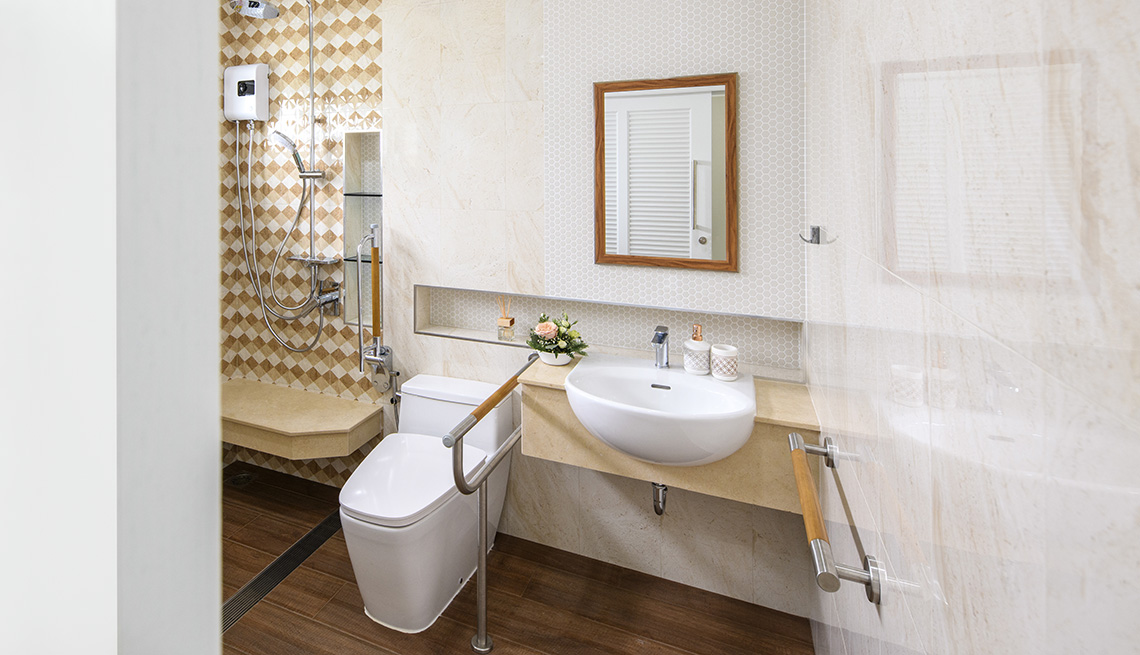When considering the cost of bathroom safety renovations, it’s crucial to understand the various factors that contribute to the overall expense. For many seniors, ensuring their bathroom is a safe and accessible space is a top priority. In this article, we will explore the key elements that affect renovation costs and provide insights into making informed decisions.

Understanding the Importance of Bathroom Safety
Bathrooms can be hazardous, especially for seniors. Wet floors, slippery surfaces, and hard-to-reach areas can increase the risk of falls and injuries. Therefore, investing in bathroom safety renovations is not just about comfort but also about creating a secure environment. To learn more about the significance of bathroom safety, check out these safety tips.
Factors Influencing Renovation Costs
Several factors can influence the cost of bathroom safety renovations. These include the size of the bathroom, the materials used, and the types of modifications needed. Additionally, labor costs and the complexity of the project can also play a significant role.
Types of Safety Renovations
Some common bathroom safety upgrades include installing grab bars, non-slip flooring, walk-in tubs or showers, and raised toilet seats. Each of these modifications comes with its own cost implications, depending on the quality and brand chosen.
Evaluating Material and Labor Costs
When planning a renovation, it’s essential to consider both material and labor costs. Quality materials may have a higher upfront cost but can offer greater durability and safety in the long run. Labor costs can vary based on the complexity of the installation and the contractor’s expertise.
Selecting the Right Products
Choosing the right products is crucial for effective bathroom safety. It’s advisable to select products from trusted brands known for their reliability and durability. For a list of recommended brands, visit top safety brands.
Budgeting for Safety Renovations
Setting a realistic budget is key to a successful renovation project. Consider all potential costs, including any unforeseen expenses that may arise during the renovation process. It’s also beneficial to seek quotes from multiple contractors to find a price that fits your budget.
DIY vs. Professional Installation
While some bathroom safety installations can be done as DIY projects, others may require professional expertise. Weighing the pros and cons of each option can help determine the best approach for your needs and budget.
Benefits of Professional Installation
Hiring a professional can ensure that installations are done correctly and safely. Professionals have the necessary skills and tools to handle complex tasks, reducing the risk of errors and ensuring compliance with safety standards. For guidance on installation, consider visiting equipment installation tips.
DIY Considerations
For those with the necessary skills, a DIY approach can save money. However, it’s important to assess whether you have the time, tools, and expertise needed to complete the project safely and effectively.
Finding the Right Contractor
When opting for professional installation, selecting a reputable contractor is vital. Look for contractors with experience in bathroom renovations for seniors and check references or reviews to ensure quality workmanship.
Questions to Ask Potential Contractors
Before hiring a contractor, ask about their experience with similar projects, their estimated timeline, and the warranty they offer on their work. This information can help you make an informed decision.
Checking Credentials and Reviews
Ensure the contractor is licensed and insured. Checking online reviews and asking for references can provide additional insights into their reliability and quality of work.
Maximizing Safety and Comfort
Beyond cost considerations, the ultimate goal of bathroom safety renovations is to enhance the safety and comfort of the space. Thoughtful planning and quality installations can make a significant difference in ensuring a bathroom is both functional and secure.
Long-Term Benefits
Investing in bathroom safety can provide peace of mind and help prevent accidents. The long-term benefits of creating a safe environment can outweigh the initial costs, providing value through increased independence and reduced risk.
Enhancing Accessibility
Accessibility is a key component of bathroom safety. Modifications such as walk-in showers and grab bars can make the bathroom more accessible, accommodating the needs of seniors and individuals with mobility challenges. For more insights on enhancing accessibility, explore bathroom safety solutions.
Conclusion
The cost of bathroom safety renovations can vary widely based on numerous factors, but the investment is invaluable for ensuring a safe and comfortable living environment. With careful planning, the right products, and professional guidance, seniors can enjoy a safer bathroom experience.

FAQs
1. What are the average costs for bathroom safety renovations?
The costs can vary depending on the scope of the project and the materials used. On average, costs can range from a few hundred to several thousand dollars.
2. How can I save money on bathroom safety renovations?
Consider prioritizing essential upgrades, seeking multiple quotes, and exploring DIY options for minor installations to save on costs.
3. What are the most important safety features to include?
Key safety features include grab bars, non-slip flooring, walk-in tubs or showers, and adequate lighting to prevent falls.
This article contains affiliate links. We may earn a commission at no extra cost to you.

